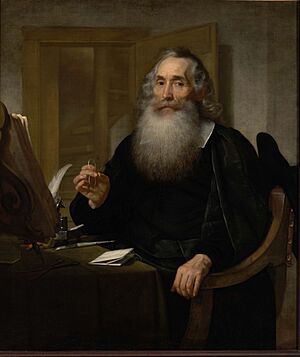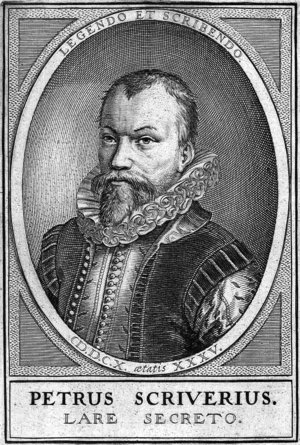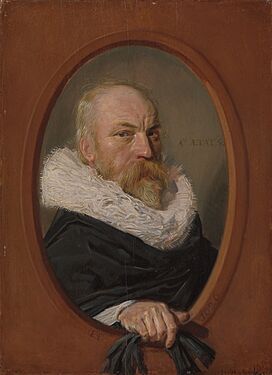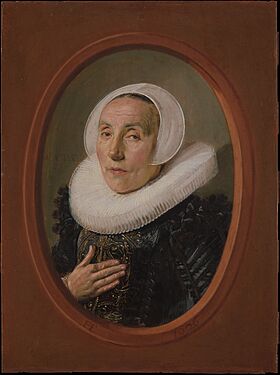Petrus Scriverius facts for kids
Petrus Scriverius, whose real name was Peter Schrijver or Schryver, was a famous Dutch writer and historian. He lived a long time ago, from 1576 to 1660. He spent his life studying and writing about the history of the Low Countries, which is what the Netherlands and Belgium were called back then.
Contents
Early Life and Family
Petrus Scriverius was born in the city of Haarlem. He went to the University of Leiden to study. There, he became good friends with another scholar named Daniel Heinsius.
In 1599, Petrus finished his studies. That same year, he married Anna van der Aar. They had many children together. However, only two of their sons, including Willem Schrijver, lived to be adults. Anna's family had money, and Petrus also came from a wealthy family. This meant he didn't need a regular job. He could spend all his time as an independent scholar, which means he studied and wrote on his own. For a few years, from 1611 to 1613, Petrus was also the headmaster of a Latin school in Duisburg.
A Stand Against the Government
Petrus Scriverius was part of a political group called the Dutch States Party. This group included important figures like Oldenbarnevelt and Grotius. Petrus wrote some Latin poems to honor his friend, Rombout Hoogerbeets, who was a Remonstrant. The government didn't like these poems. They thought the poems were unfair and made people upset.
Because of his poems, Petrus was fined 200 guilders, which was a lot of money back then. When the officials came to collect the fine, Petrus told them to take pots and pans from his kitchen. But these items weren't worth enough money. Then, his wife Anna cleverly told the officials to take books from their library instead. She said the books were what made her husband write the poems, so selling the books should pay the fine!
Petrus and Anna had a very long and happy marriage that lasted 57 years. A famous artist named Frans Hals painted their portraits when they celebrated their 25th wedding anniversary.
Family in Art
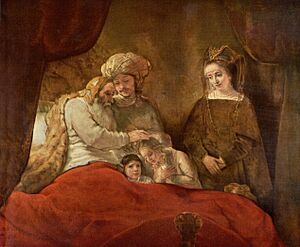
In 1655 or 1656, Petrus's son, Willem Scrijver, asked the famous artist Rembrandt to paint a special picture. The painting is called Jacob Blessing the Sons of Joseph. It shows Petrus Scriverius's family dressed as characters from the Bible. Petrus himself is shown as Jacob. His son Willem, Willem's wife Wendela de Graeff, and their two sons are also in the painting. It's a beautiful way to show their family history.
Most of Petrus Scriverius's life was spent in Leiden. However, in 1650, he became blind. He spent his last years living in his son's house in Oudewater, where he passed away in 1660.
His Writings and Studies
Petrus Scriverius was known for his detailed notes and editions of ancient texts. He studied the works of Roman writers like Martial and Ausonius. He also edited poems by Joseph Justus Scaliger and tragedies by Seneca. His collected works, including his scholarly and poetic writings, were published after his death.
He also made many important contributions to the history of Holland. Some of his well-known historical books include:
- Batavia Illustrata (1609)
- Corte historische Beschryvinghe der Nederlandscher Oorlogen (1612), which was a short history of the Dutch wars.
- Principes Hollandiae Zelandiae et Frisiae (1650), which was about the rulers of Holland, Zeeland, and Friesland. This book was later translated into Dutch.
Images for kids


